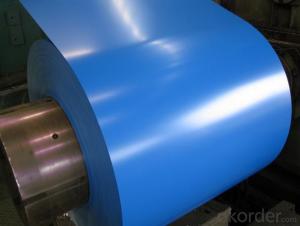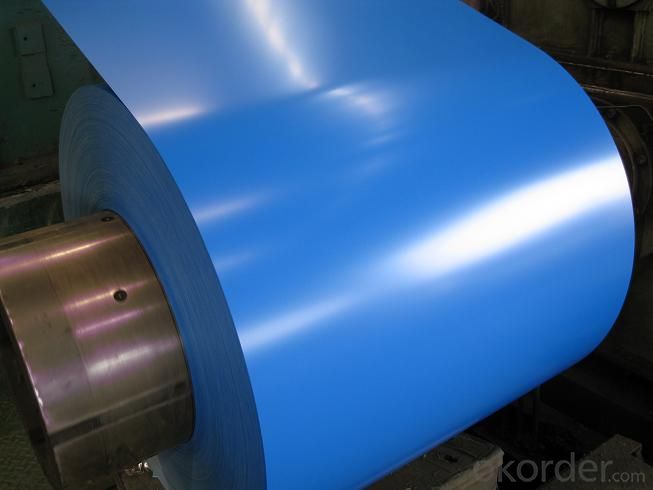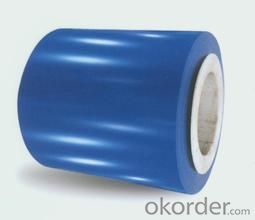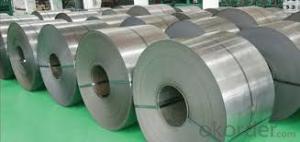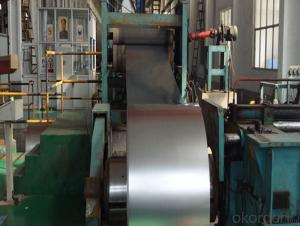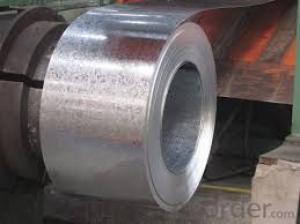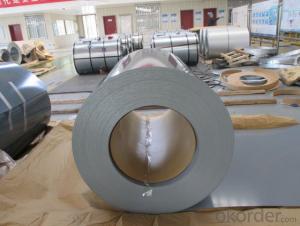SGCC/SGLCC/Coated Alumimum Zinc Coils/ Galvanized Steel Coil
- Loading Port:
- Tianjin
- Payment Terms:
- TT OR LC
- Min Order Qty:
- 25 m.t.
- Supply Capability:
- 50000 m.t./month
OKorder Service Pledge
OKorder Financial Service
You Might Also Like
Specification
SGCC/SGLCC/Coated Alumimum Zinc Coils/Galvanized Steel Coil
1. Application of Coated Alumimum Zinc Coils/Galvanized Steel Coil:
Construction, the manufacturing of cars, ships,containers and household electric appliances, other industries usage
they are mainly used in construction, light industry, automobile, agriculture, animal husbandry, fishery and commerce, etc industries.
.Manufacture anticorrosion, industrial and civil architecture roof boarding, roof grille.
.Make home appliance’s case, civil chimney, kitchen utensils, etc
.Corrosion resistant parts of cars
.Food storage, meat and aquatic products’ freezing and processing equipment etc;
.The equipments to store and transport materials, and packing implements.

2.Features of Coated Alumimum Zinc Coils/Galvanized Steel Coil:
* uses hot dip galvanized steel sheet as the base material
* zinc layer protection, dope on the zinc layer can cover and protect the
steel base from corrosion
* color coated sheet is light, beautiful and has good anti-erosion performancevanized steel coil
* As a rich experience manufacturer, we provide quality product, competitive price and reliable after-sales service.
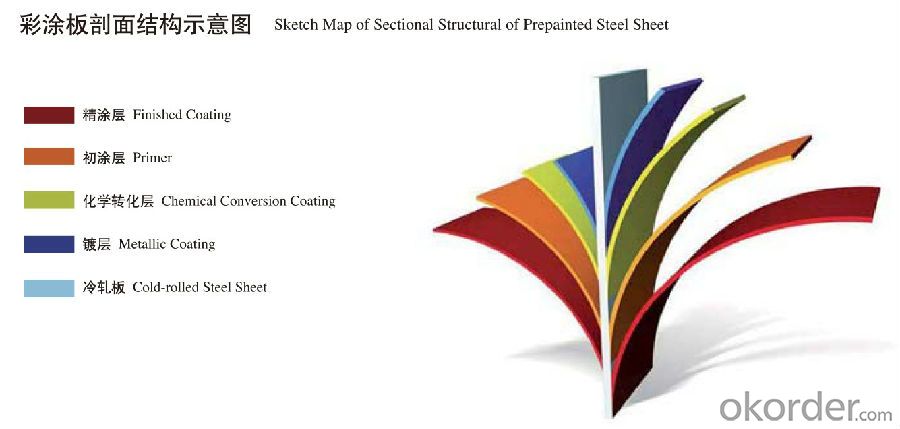
3.Surface Finish of Coated Alumimum Zinc Coils/Galvanized Steel Coil:
Surface finish | Pattern | Application |
Regular spangle | Standard spangles with flower pattern | General uses |
Small spanlge | Small spangles than regular | General painting applications |
Zero spangle | Extremely minimized spangles | Special painting applications |
4. Coated Alumimum Zinc Coils/Galvanized Steel Coil images:
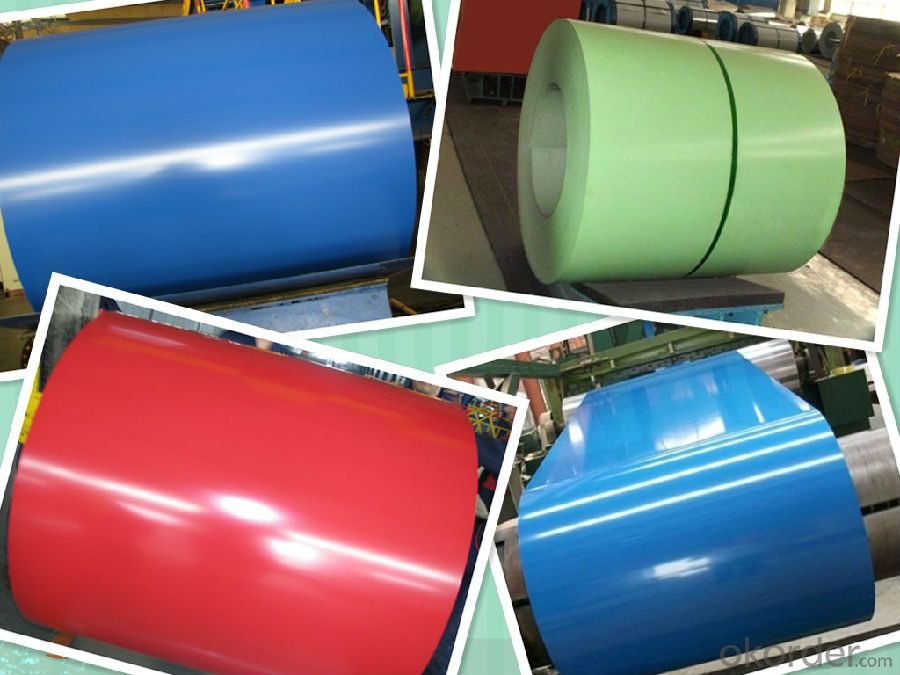
APPLICATION:
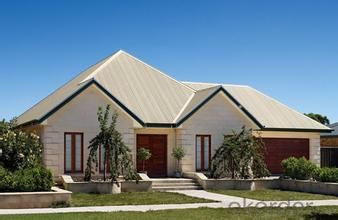
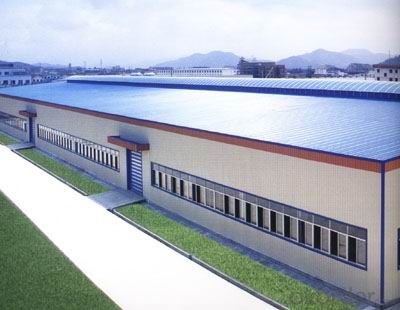
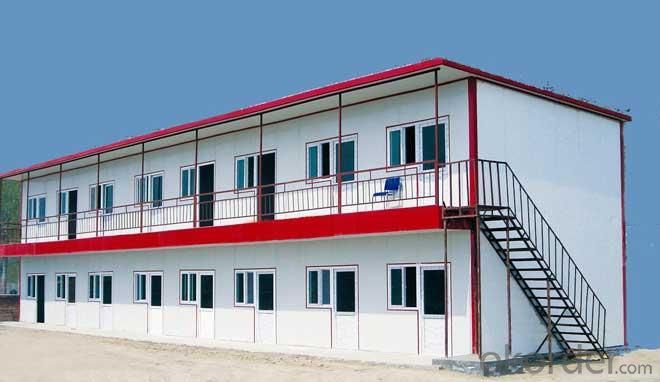
PROUDUCTION LINE:
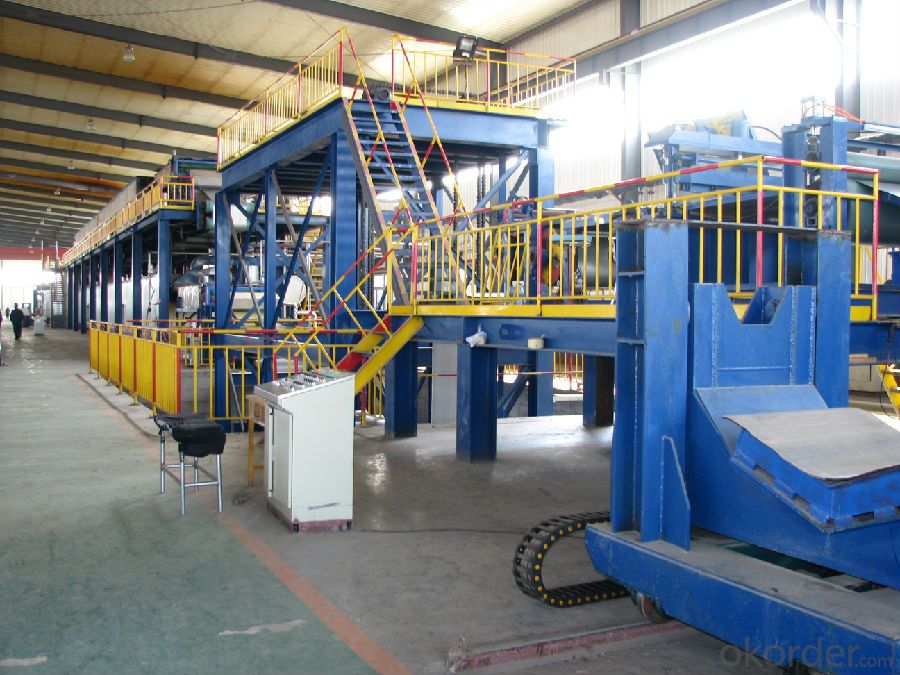
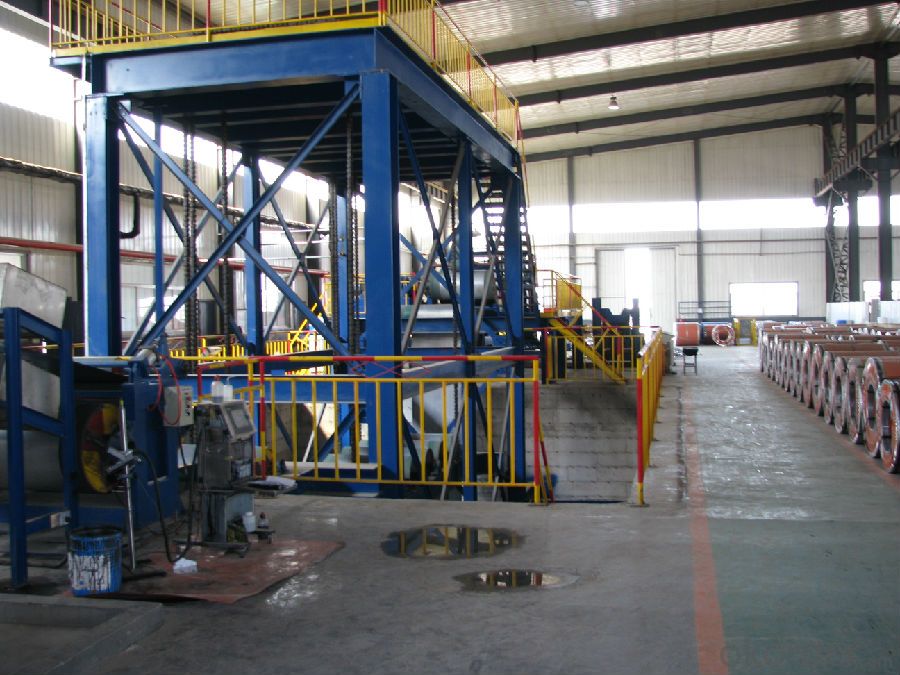
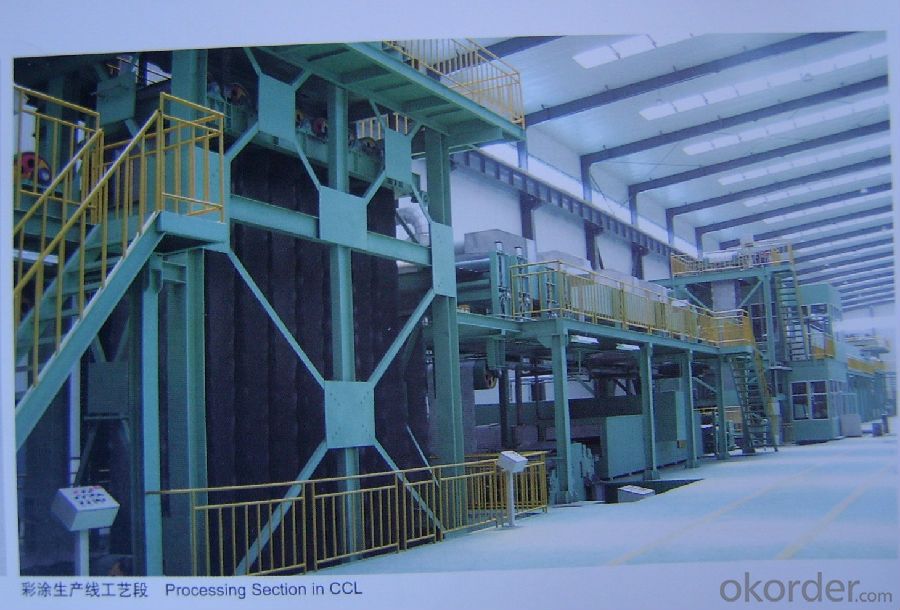
4. Packing:
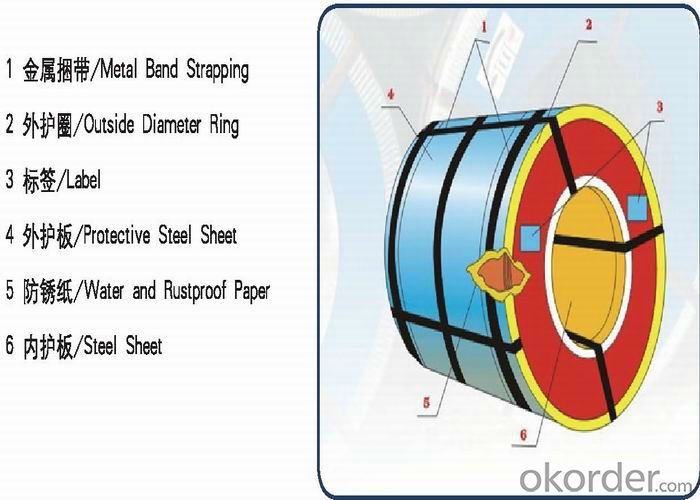
5.FAQ
We have organized several common questions for our clients,may help you sincerely:
①How about your Warranty?
Warranty: 1-Year for the whole light. Warranty is based on correct storage, installation, using and maintenanc
②How to guarantee the quality of the products?
We have established the international advanced quality management system,every link from raw material to final product we have strict quality test;We resolutely put an end to unqualified products flowing into the market. At the same time, we will provide necessary follow-up service assurance.
③How long can we receive the product after purchase?
In the purchase of product within three working days, We will arrange the factory delivery as soon as possible.
- Q: Want to construct a patio cover approx. 20 feet long. Only want to use a 6x6 or 8x8 post at each end. What size steel i-beam would I have to use to carry the load???
- First of all is it a rule of thumb with carpenters and ironworkers never to set steel on wood. I would use a 14 tall (2) ply lvl header. *Laminated veneer Lumber. This will hold the weight of the structure between your posts. A steel beam would be quite costly today as prices on steel have skyrocketed, plus you would need a boom truck or small crane to set this beam, and you would need some sort of mounting bracket or holes pre-drilled in the beam ends to secure it to the posts. Plus you would need to have the beam delivered and if your patio is in the backyard - you would need another pc.of equipment to get it around back. Advice from me is to go with an LVL beam. They are 1+3/4 Thick and you would need a (2 ply ) beam, which means you set one pc. and then laminate another one into the first. Glue between layers (use heavy duty liquid nails) and then Lag screw them together. Use 5/16 x 3 lag screws with a washer on each one. Pre-drill holes about 3/16 smaller than lag screws - then insert lag screws and tighten up with an electric impact.
- Q: How are steel coils inspected for surface quality?
- Steel coils are inspected for surface quality through a meticulous process that involves various methods and technologies. The inspection is crucial as it ensures the coils meet the required standards and are free from any defects or imperfections. Here are the steps involved in inspecting steel coils for surface quality: 1. Visual Inspection: Initially, the coils undergo a visual inspection where trained personnel visually examine the entire surface for any visible defects such as scratches, dents, or any irregularities. This step helps identify any obvious issues that can be detected through visual observation. 2. Magnetic Particle Inspection: This non-destructive testing method involves applying a magnetic field to the steel coil's surface and then applying a magnetic particle solution. Any surface cracks or defects will cause the magnetic particles to cluster, making them visible under proper lighting. This technique is highly effective in detecting surface cracks and other surface abnormalities. 3. Eddy Current Testing: This method of inspection utilizes electromagnetic induction to identify surface defects. An eddy current probe is passed over the steel coil's surface, and any variations in the electrical current induced by the magnetic field will be detected. This technique is particularly useful for detecting surface cracks, pits, or corrosion on the coil's surface. 4. Ultrasonic Testing: Ultrasonic waves are used to inspect the steel coil's surface for any hidden defects such as subsurface cracks or inclusions. High-frequency sound waves are transmitted into the material, and any changes in the sound wave pattern that are reflected back indicate the presence of defects. Ultrasonic testing is highly reliable and can detect even the smallest defects within the steel coil. 5. Surface Roughness Measurement: The surface roughness of the steel coil is measured using specialized equipment. This measurement helps determine if the surface meets the required smoothness standards. The equipment scans the surface and provides detailed information about the roughness, enabling the inspector to ensure it falls within the acceptable range. Overall, steel coils undergo a comprehensive inspection process that combines visual examination with advanced testing methods such as magnetic particle inspection, eddy current testing, ultrasonic testing, and surface roughness measurement. These inspection techniques help identify and evaluate any potential defects or surface irregularities, ensuring that the steel coils meet the required surface quality standards.
- Q: How are steel coils affected by global trade policies?
- Steel coils can be significantly affected by global trade policies. Trade policies, such as tariffs and quotas, can impact the import and export of steel coils, influencing their availability and pricing in different markets. Changes in trade policies can lead to shifts in supply and demand, affecting the volume and cost of steel coil imports and exports. Additionally, trade policies aimed at protecting domestic industries may create barriers for steel coil imports, potentially affecting the competitiveness of steel coil manufacturers and suppliers.
- Q: full discription about hydrolics used in steel melting shop with hyd valve is use in thair circit too ?
- The correct spelling is hydraulics. I haven't heard the term steel melting shop you probably means a foundry or a steel mill The most obvious example i can think of is hydraulic-operated fork lifts. Hydraulic cylinders are used to lift the forks and to tilt them upwards or downwards. The valves are coneccted to levers next to the steering wheel. Hydraulic pressure is supplied by a hydraulic pump driven by a propane or diesel engine. In some forklift designs the wheels are also not connected directly to the engine, but driven by hydraulic motors. There are also a large variety of machines used in steel mills and metalworking companies to cut and shape metal parts. for example, press brakes, plate cutting shears, stamping presses, hole punch machines, drawing presses, etc. These types all operate in much the same basic way. They use a very large cylinder or group of cylinders to apply many tons of force to different kinds of metal working tools.
- Q: What are the different methods of cut-to-length shearing for steel coils?
- There are several different methods of cut-to-length shearing for steel coils, including rotary shearing, flying shear, stationary shear, and programmable logic controller (PLC) controlled shear. Each method has its own advantages and is used based on factors such as coil thickness, desired precision, and production speed requirements.
- Q: which type of carbon steel does not have manganese
- None. Mn is a trace impurity in all steels, if you look carefully enough. If you want to find a steel where Mn is not intentionally added, start looking at the alloy composition specifications, there are hundreds of steels. Why are you worried about Mn? Mn is typically added to steels for a very good reason.
- Q: What are the different methods of levelling steel coils?
- There are several methods used for leveling steel coils, depending on the specific requirements and applications. Some of the common methods include: 1. Roller Leveling: This method involves passing the steel coil through a series of rollers that exert pressure on the material, effectively reducing any residual stresses and removing any waviness or curvature. Roller leveling is commonly used for thinner gauge coils where a high degree of flatness is desired. 2. Stretch Leveling: This method involves stretching the steel coil beyond its yield point to eliminate any shape defects. The coil is subjected to tension in a stretcher leveler machine, which elongates the material and removes the inherent stresses. Stretch leveling is often used for thicker gauge coils where a higher degree of flatness is required. 3. Temper Milling: This method involves passing the steel coil through a temper mill, which is a cold reduction mill equipped with work rolls on top and bottom. The temper mill imparts tension on the coil, flattening it and improving its shape and surface quality. This method is typically used for higher strength steel grades. 4. Corrective Leveling: This method is employed when the steel coil has significant shape defects, such as wavy edges or center buckles. Corrective leveling involves selectively removing material from specific areas of the coil to achieve a flat and uniform surface. This process is often done using laser or plasma cutting machines. 5. Tension Leveling: This method is similar to stretch leveling, but it involves applying tension to the coil without exceeding its yield point. Tension leveling utilizes a series of bridle rolls to stretch the material, thereby removing any internal stresses and leveling the coil. This method is commonly used for higher strength and thinner gauge coils. These methods can be used individually or in combination depending on the specific requirements of the steel coil and the desired end product. Each method has its advantages and limitations, and the choice of leveling method will depend on factors such as the coil thickness, material properties, and desired flatness.
- Q: How do steel coils contribute to the manufacturing of HVAC systems?
- The manufacturing of HVAC systems heavily relies on steel coils, which have a critical role. These coils typically consist of high-quality steel, known for its exceptional strength, durability, and resistance to heat. Heat exchangers are one of the primary applications of steel coils in HVAC systems. These exchangers play a vital role in transferring heat between different mediums, usually air and a refrigerant. In HVAC systems, steel coils are employed in both the evaporator and condenser coils. The evaporator coil absorbs heat from the indoor air, while the condenser coil releases heat to the external environment. These coils are designed with numerous coiled tubes connected by fins. The use of steel in their construction ensures their ability to withstand high pressure and resist corrosion, guaranteeing the long-term reliability and efficiency of the HVAC system. Steel coils also contribute to the overall structural integrity of HVAC systems. They are commonly utilized in the fabrication of ductwork, responsible for distributing conditioned air throughout a building. The strength and rigidity of steel coils enable the ductwork to maintain its shape and structural integrity under various conditions, including high air pressure and temperature fluctuations. Additionally, steel coils are frequently involved in the fabrication of HVAC system cabinets and enclosures. These cabinets house several system components, including compressors, fans, and control panels. The robustness of steel coils ensures that the cabinets can withstand external forces, protect the internal components, and provide a secure housing for the entire HVAC system. To summarize, steel coils are crucial components in the manufacturing of HVAC systems. Their strength, durability, and heat resistance make them ideal for applications such as heat exchangers, ductwork, cabinets, and enclosures. By incorporating steel coils, HVAC manufacturers can produce systems that efficiently regulate temperature, enhance indoor air quality, and provide comfort in various residential, commercial, and industrial settings.
- Q: What really is the difference between stain-less steel and iron? I only know that iron is an element, and stain-less steel is an alloy...but what else is there?
- Steel is an alloy composed of mainly iron and carbon. Pure iron is very rarely used anymore. Depend on the concentration of the carbon, you can get from wrought iron to high grade steel. For stainless steel, Chromium is added to the alloy to prevent rusting. Just go to wiki. you should be able to find a lot more about it
- Q: How do steel coils contribute to earthquake resistance in structures?
- Steel coils contribute to earthquake resistance in structures by providing strength and flexibility. When used as reinforcement in concrete structures, steel coils help to distribute and dissipate the energy generated during an earthquake. This helps to prevent the excessive deformation or collapse of the structure, enhancing its overall seismic performance. Steel coils also improve the ductility of the structure, allowing it to withstand the dynamic forces and vibrations caused by seismic activity.
Send your message to us
SGCC/SGLCC/Coated Alumimum Zinc Coils/ Galvanized Steel Coil
- Loading Port:
- Tianjin
- Payment Terms:
- TT OR LC
- Min Order Qty:
- 25 m.t.
- Supply Capability:
- 50000 m.t./month
OKorder Service Pledge
OKorder Financial Service
Similar products
Hot products
Hot Searches
Related keywords
